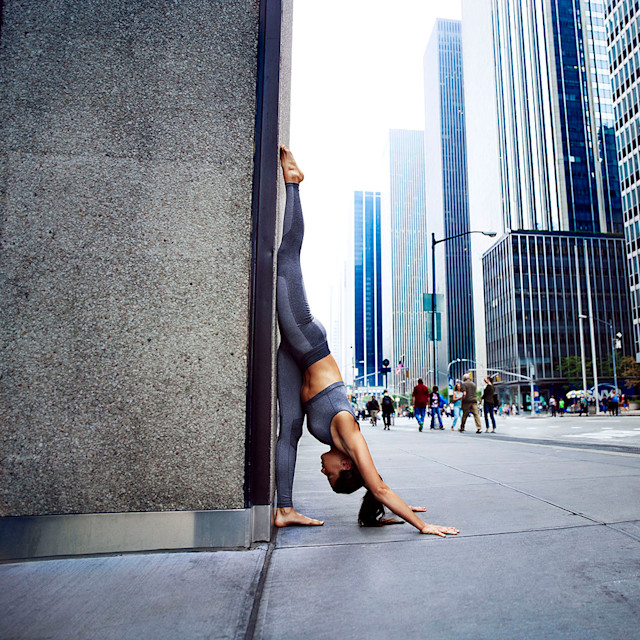Take our quiz to find out.
Mobility is considered a key to unlocking untapped fitness potential—but in this case, it is possible to have too much of a good thing.
Up to twenty percent of people are hyper-mobile. While that may sound advantageous, it's a clinical condition that reduces joint stability because of faulty connective tissues, explains Philip Deer, certified personal trainer and education manager for the Equinox Fitness Training Institute in Beverly Hills.
Women tend to be more prone to it than men because they generally have looser joints. Separately, many people are born with abnormal collagen structures, a biological quirk that increases mobility. Stretching enthusiasts can also develop it from taking the practice too far.
Hyper-mobility has several risks, says New York City-based sports medicine physician Clifford Stark, MD. Some of them spike when you partake in high-impact or high-intensity exercise because of the stress it puts on your already-unstable joints, Deer notes. They include:
-joint tenderness and swelling, especially post-exercise
-higher likelihood of injuries like sprains and dislocations, particularly in the knees
-reduced ability to build strength, since the joints can’t safely handle heavy loads and the tendons can’t properly transmit the power produced by muscles through the joints
-excessive joint degeneration in the long term
Are you hyper-mobile?
Researchers typically use the following questions to identify hyper-mobility. If you answer yes to at least two, you're affected to some degree. The more affirmatives you rack up, the more serious your condition and the more you might consider seeing a physical therapist for treatment.
How to train if you're hyper-mobile:
Be wary of yoga, since it further increases joint mobility, Deer says. Focus your practice on stability-forward poses, like Chair and Warrior III—not those that demand a ton of flexibility, like Wheel pose and other backbends.
Static stretching (as opposed to dynamic warm-ups) is a no-go in the affected joints. “When hyper-mobile people do feel tight, they should opt for massage or foam rolling, which works on the tissues without stretching the joints,” Deer suggests.
When lifting, never use weights that make you fatigue before the sixth rep, he adds. Stick to loads and rep ranges that support hypertrophy and endurance (between 6 and 20 reps per set) rather than pure strength. And skip advanced plyometric exercises like box jumps, which can put a dangerous amount of stress on the joints.
Consider working with a personal trainer who can monitor your form and keep you from overextending your joints. Hyper-mobile people have a difficult time sensing this on their own since moving into such an extreme range of motion feels completely natural to them.
Incorporate controlled and isometric exercises into every workout to build stability. Deer suggests planks, dead bugs, bird dogs, and slow bear crawls, which give you the opportunity to feel and sense your joints’ positions and master proper form.
Photo: Bersa / Art Partner Licensing
